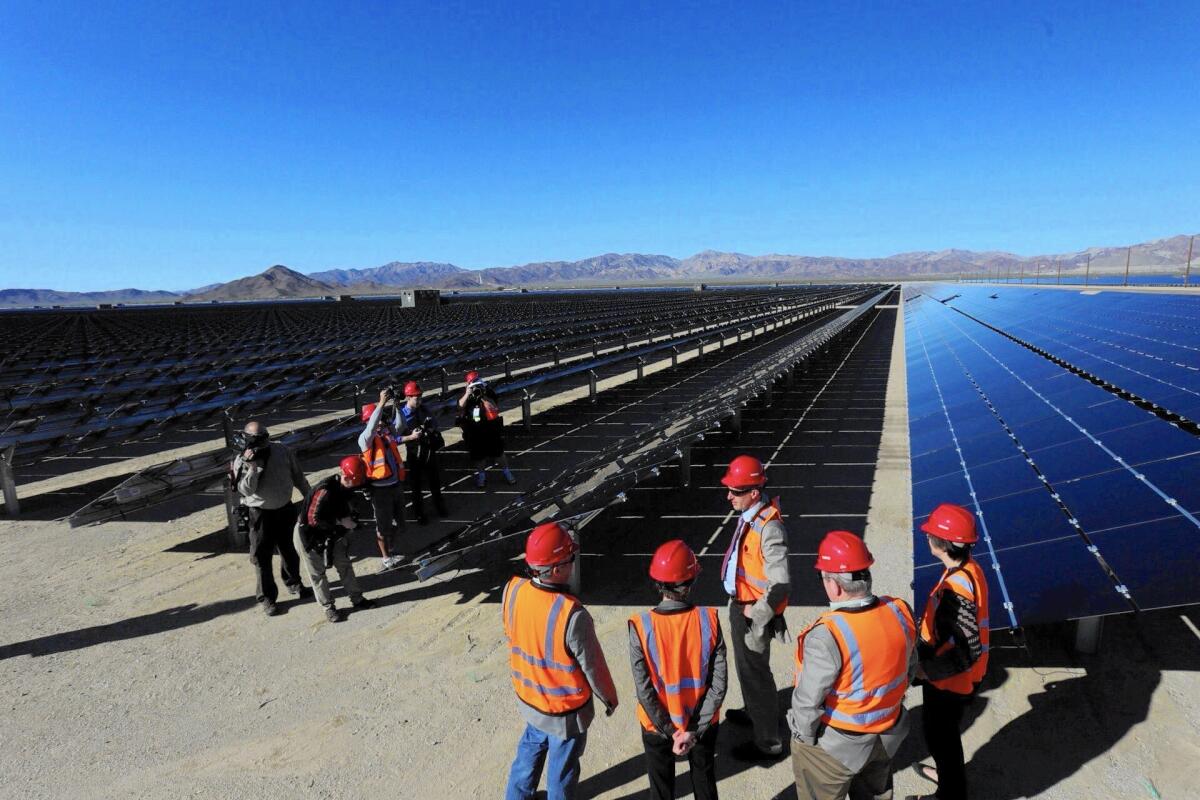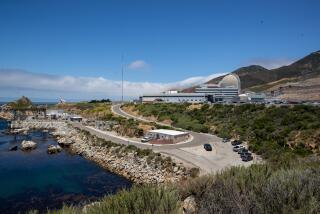Desert renewable energy plan is altered to win counties’ support

The California desert may be a green energy developer’s dream, but county officials have serious concerns about a plan to manage renewable energy projects on 22 million acres of the state’s sunniest public and private lands.
In an effort to maintain county support, state and federal sponsors of the Desert Renewable Energy Conservation Plan on Tuesday said they would first focus on 10 million acres of public lands, and delay rollout on the rest until local issues can be resolved on a county-by-county basis.
The plan aims to streamline permitting processes for development of renewable energy generation and transmission, while simultaneously enforcing environmental regulations protecting species such as the desert tortoise, along with tribal lands and public recreation areas.
Judging from the 12,000 comments, many of them stinging, on the 8,000-page draft of the plan released in September, state and federal agencies had no choice. Among the harshest critics were seven counties — Los Angeles, San Diego, Imperial, Kern, Riverside, San Bernardino and Inyo — with permitting authority on private lands targeted by the plan.
Two million acres of those lands are to be designated as “development focus areas” suitable for a projected 80% of the alternative energy projects expected to be built under the plan.
County officials worry that the plan conflicts with existing environmental programs and with areas they have already designated for renewable energy in their regions. Some are concerned about losing tax revenues, given that state tax exemptions for solar projects on private lands, originally scheduled to end in 2016, were recently extended through 2025.
Andy Horne, deputy executive officer for natural resources development in Imperial County, said the changes announced Tuesday “were a positive step forward. While they may result in delays, that’s better than jumping off a cliff with something that doesn’t work.”
San Bernardino County officials described the plan’s lack of a detailed analysis of costs and benefits as “a fatal flaw.” They also complained that its designation of certain land as conservation zones would restrict moneymaking land uses, including mining.
In Imperial County, where 20,000 acres have been permitted for solar projects over the last five years, the big concern is that renewable energy development will displace agriculture.
Karen Douglas, a California Energy Commission member, said the delay “will allow us to create tailored approaches for each county.”
Environmental groups, including the Center for Biological Diversity and the Sierra Club, suggested that moving forward on only the public land portion of the plan could favor more renewable project development, and less conservation.
By moving forward on public lands, officials hope to help meet the Obama administration’s goal of generating 20,000 megawatts of power from federal land by 2020.
More to Read
Start your day right
Sign up for Essential California for news, features and recommendations from the L.A. Times and beyond in your inbox six days a week.
You may occasionally receive promotional content from the Los Angeles Times.






